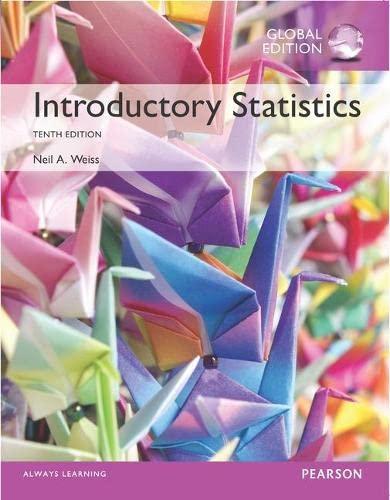In this exercise, you are asked to verify that the sum of the joint probabilities in a
Question:
In this exercise, you are asked to verify that the sum of the joint probabilities in a row or column of a joint probability distribution equals the marginal probability in that row or column. Consider the following joint probability distribution.
C1 ··· Cn P(Ri)
R1 P(R1 & C1) ··· P(R1 & Cn) P(R1)
· · ··· · ·
· · ··· · ·
· · ··· · ·
Rm P(Rm & C1) ··· P(Rm & Cn) P(Rm)
P(Cj) P(C1) ··· P(Cn) 1
a. Explain why R1 =
(R1 & C1) or ··· or (R1 & Cn)
.
b. Why are the events (R1 & C1),..., (R1 & Cn) mutually exclusive?
c. Explain why parts
(a) and
(b) imply that P(R1) = P(R1 & C1) +···+ P(R1 & Cn).
This equation shows that the first row of joint probabilities sums to the marginal probability at the end of that row. A similar argument applies to any other row or column.
Step by Step Answer:






